November is National American Indian Heritage Month. Also known as American Indian and Alaska Native Heritage Month, it is the perfect time to celebrate the histories, cultures, and traditions of American Indians. If you’re looking for resources to support your students’ studies, you’re in luck! There are plenty out there, and The Walking Classroom is the perfect place to start!
Begin with Biographies . . .
Thanks to The Walking Classroom, it’s easy to learn about many famous figures in American Indian history. Just pick a podcast, and begin walking, listening, and learning! There’s so much to discover!
Meet Lewis & Clark and Sacajawea (5-#35, Combined-#100). As Lewis and Clark explored the Pacific Northwest, Sacajawea, a Shoshone interpreter and guide, helped them on their journey.
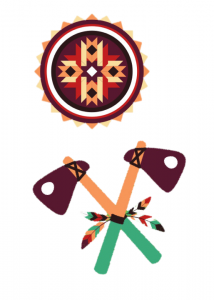 Chief Joseph (4-#88, Combined-#110), the noted Nez Pearce chief, met Lewis and Clark on their travels, then later led his people in the Nez Pearce War. Another tribal leader, a Shawnee named Tecumseh (5-#36, Combined-#101), wanted to unite the American Indian tribes. Along with a group of them, he allied with the British during the War of 1812, but was killed in 1813.
Chief Joseph (4-#88, Combined-#110), the noted Nez Pearce chief, met Lewis and Clark on their travels, then later led his people in the Nez Pearce War. Another tribal leader, a Shawnee named Tecumseh (5-#36, Combined-#101), wanted to unite the American Indian tribes. Along with a group of them, he allied with the British during the War of 1812, but was killed in 1813.
Sequoyah (5-#37, Combined-#102), a Cherokee metalworker from eastern Tennessee, invented the Cherokee syllabary. With its 85 characters, it became the Cherokee writing system!
Look at Life on the Land or Reach for the Stars!
Discover the Native American Mound Builders (4-#72, Combined-#96), a group that settled in the Mississippi and Ohio River valleys. If you are fascinated by what they built, extend your study with a lesson about other types of Native American structures.
Wondering what took some of the eastern tribes west? Learn about the removal of American Indians from their homelands by listening to Trail of Tears (5-#40, Combined-#105). Afterward, continue with a video or engage in a fun follow-up activity.
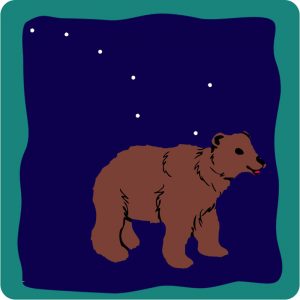 Next, move from building on and traversing the land to studying the sky! Have a listen to Native American Constellations (4-#67, Combined-#146), then sample some American Indian legends. Engage in supplemental activities. Have your students write their own legend, and design a constellation to go along with it. Make it fun! Provide black construction paper and milky gel pens for students to use in creating their final product.
Next, move from building on and traversing the land to studying the sky! Have a listen to Native American Constellations (4-#67, Combined-#146), then sample some American Indian legends. Engage in supplemental activities. Have your students write their own legend, and design a constellation to go along with it. Make it fun! Provide black construction paper and milky gel pens for students to use in creating their final product.
Take Your Study South!
Go south, and investigate the native cultures of Central and South America. Try one of more of this trio of podcasts, and focus on groups who settled in specific geographic areas:
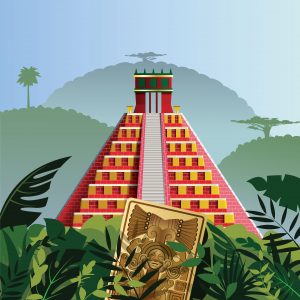 The Maya (4-#69, Combined-#57) lived in what is now modern-day Mexico and Central America.
The Maya (4-#69, Combined-#57) lived in what is now modern-day Mexico and Central America.- The Aztec (4-#70, Combined-#58) made their home in central Mexico.
- The Inca (4-#71, Combined-#59) settled in the Andes Mountains of South America.
Resources from National Sources . . .
Looking for more support materials? Have no fear! Free resources are in abundance! Use primary sources from the National Archives. Discover artifacts from different tribes with a virtual visit to the National Museum of the American Indian. Then, test your students skills’ with an online game, to see how much they’ve learned!
Hit the road to see historic places with the help of the National Park Service. Visit sites connected with the Trail of Tears or Lewis and Clark’s expedition, and have your students step back in time. Road trip not possible? Let your students chart their own course on a self-made map. They could also do a little research and create a historically-based journal or a scrapbook of mementos from their “journey”!
. . . and Activities across Curricular Areas!
Need some different things to try? There are plenty! Dig deeper and learn about the history behind National American Indian Heritage Month, or engage your students in other activities. They are sure to enjoy dramatizing folktales, learning new words, or preparing traditional foods!
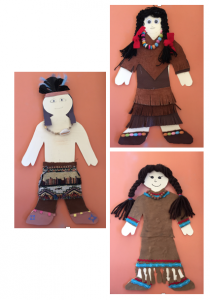 You can even cross curricular lines, by mixing in some math, with a study on Maya time. Why not add in some art? Have your students build a Native American structure, or let them design a board game. They can also take a cue from adopter Kathleen Butler’s class, and create paper dolls (photos at right) dressed in tribal costumes! All of these are great ways for them to show their newfound knowledge.
You can even cross curricular lines, by mixing in some math, with a study on Maya time. Why not add in some art? Have your students build a Native American structure, or let them design a board game. They can also take a cue from adopter Kathleen Butler’s class, and create paper dolls (photos at right) dressed in tribal costumes! All of these are great ways for them to show their newfound knowledge.
With The Walking Classroom, there’s always something to explore! Learn about other timely topics and more ideas in future posts.


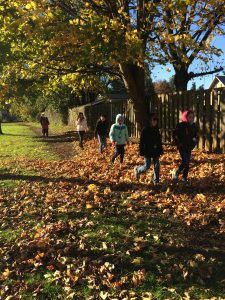
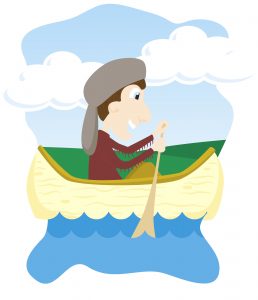
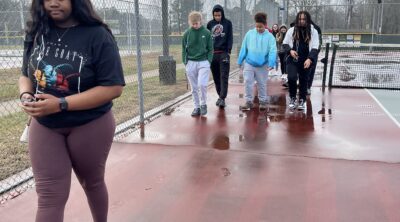
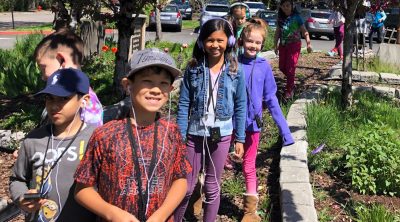
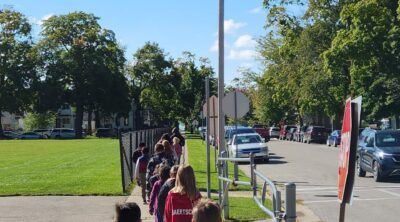
Not only am I a teacher and Walking Classroom Participant, but I am also an American Indian. Every year, I look for activities to use with my classroom to enhance their knowledge of the American Indians, their contributions, and their struggles. This year, I did use the walking classroom podcasts on Sequoyah and on Tecumseh. My students were fascinated by these topics. Our walks were very focused and our follow up discussions were enlightening. If possible, we could have spent much longer discussing and sharing on the topic of these two men.
My students love participating in the walking classroom program. They love that they get out in the fresh air and that what they are listening to is so interesting. They have made comments about the fact that it is not a robotic voice that they have to listen too like so many recorded stories.
Every year I struggle with the job of getting students excited about learning their history. This year was completely different thanks to Walking Classroom. My students couldn’t wait to go for a walk and learn about Native Americans. The Walking Classroom podcast were so inviting. My students would come to school everyday with newly learned information they wanted to share with me and with their friends. It is so exciting to see and hear the excitement for learning in my students.
As an American Indian myself, I was very pleased to have the stories of Tecumseh and Sequoyah, as well as others that were related to Native American History. So often I have found that information regarding Native American Heritage Month is seriously lacking. I pulled these resources during the entire month of November. I found that they opened the discussion quite a bit. My students enjoyed listening and learning and I often heard them talking and discussing as we read from our social studies lessons.